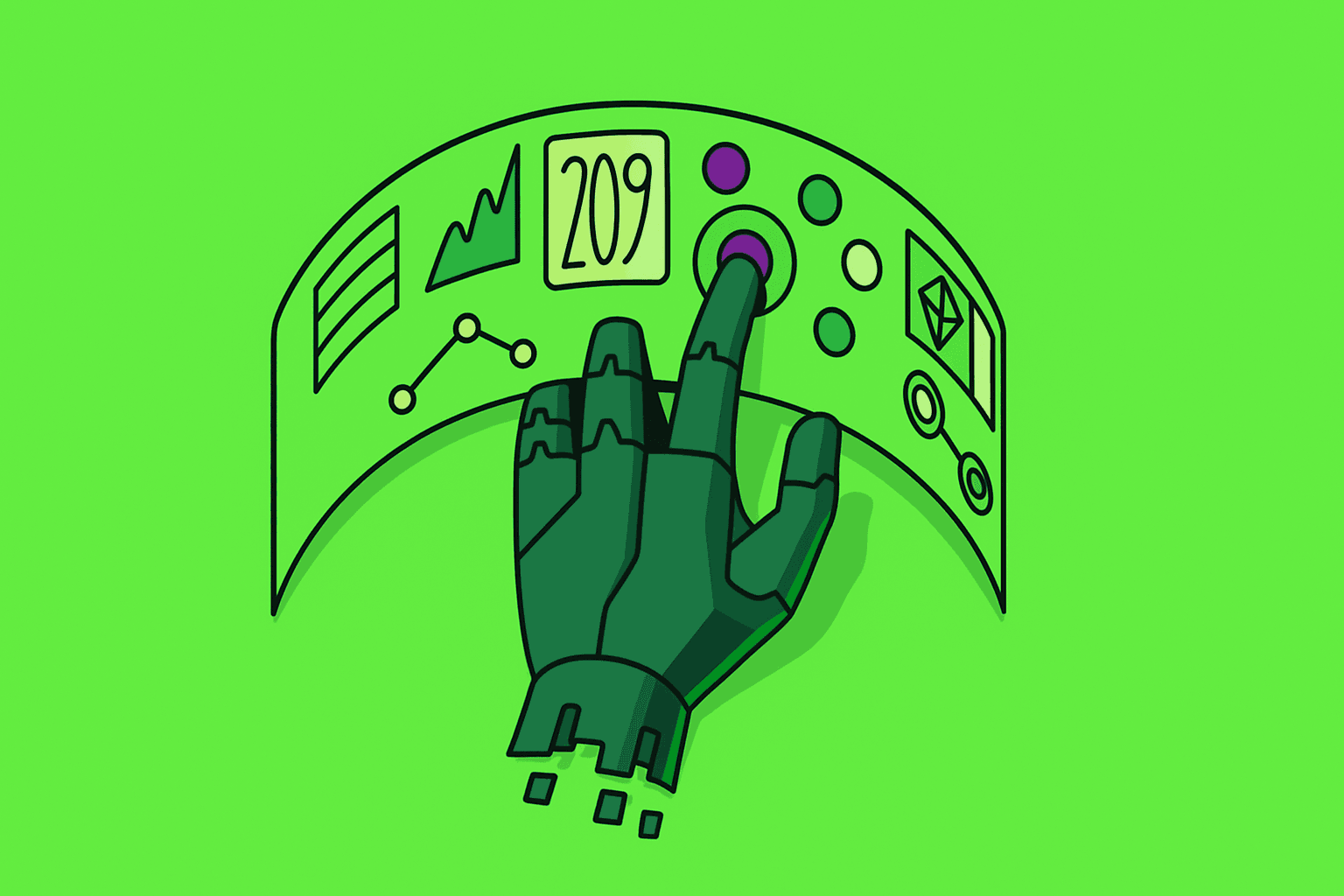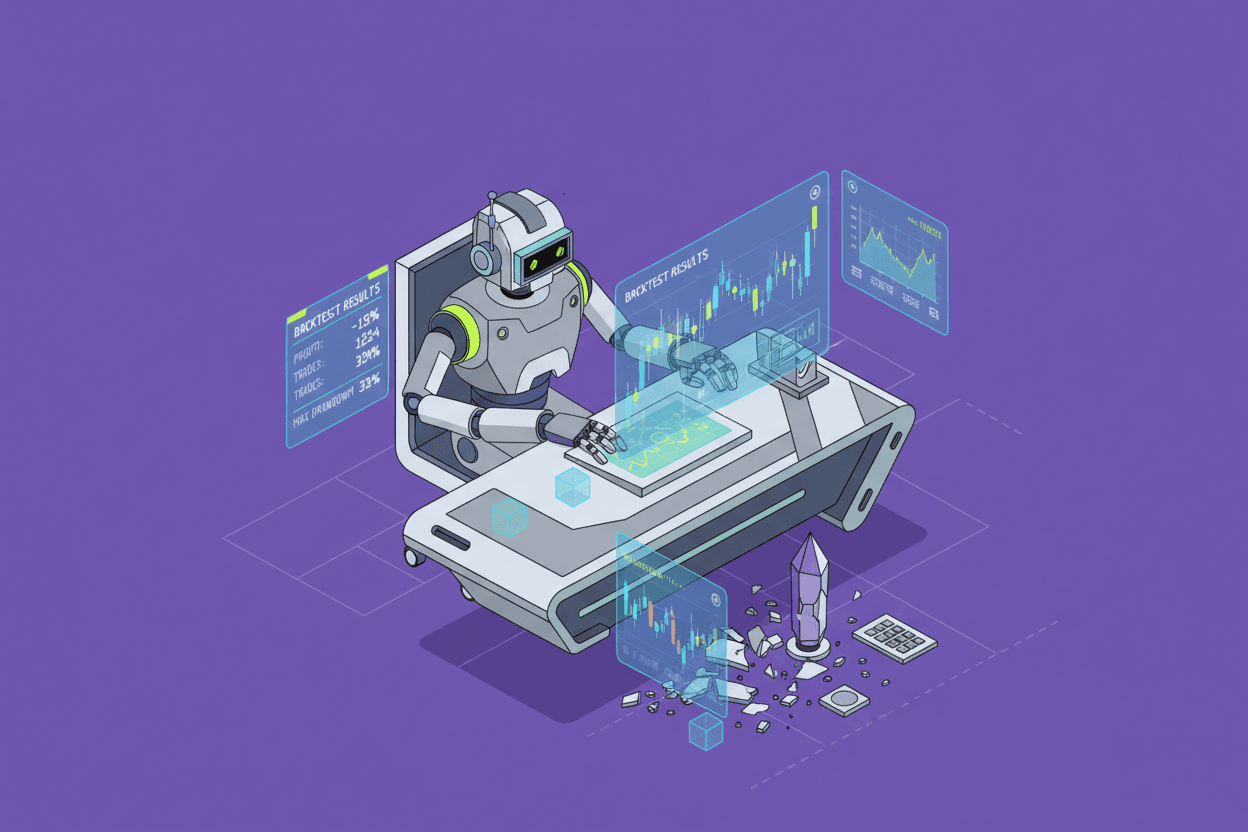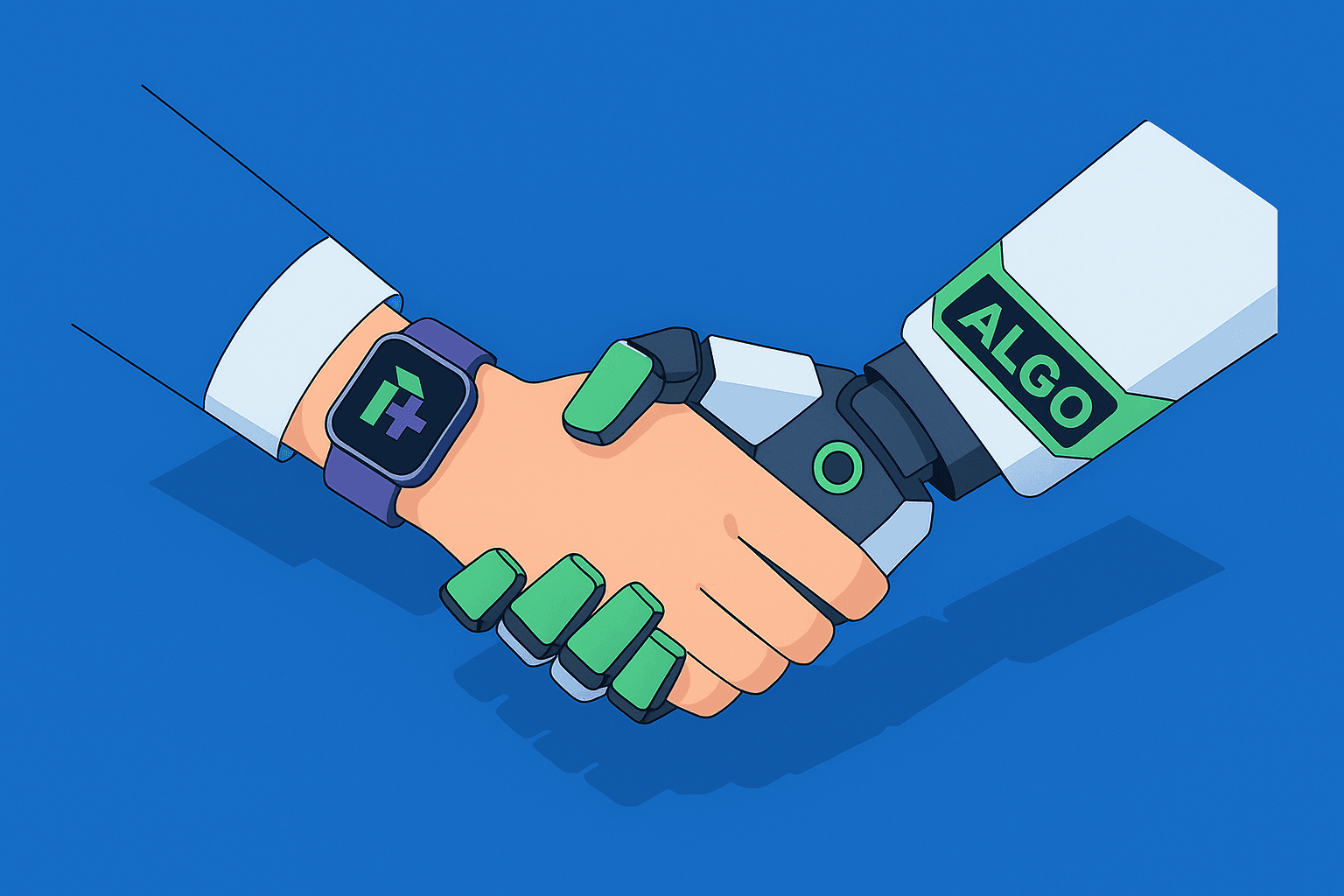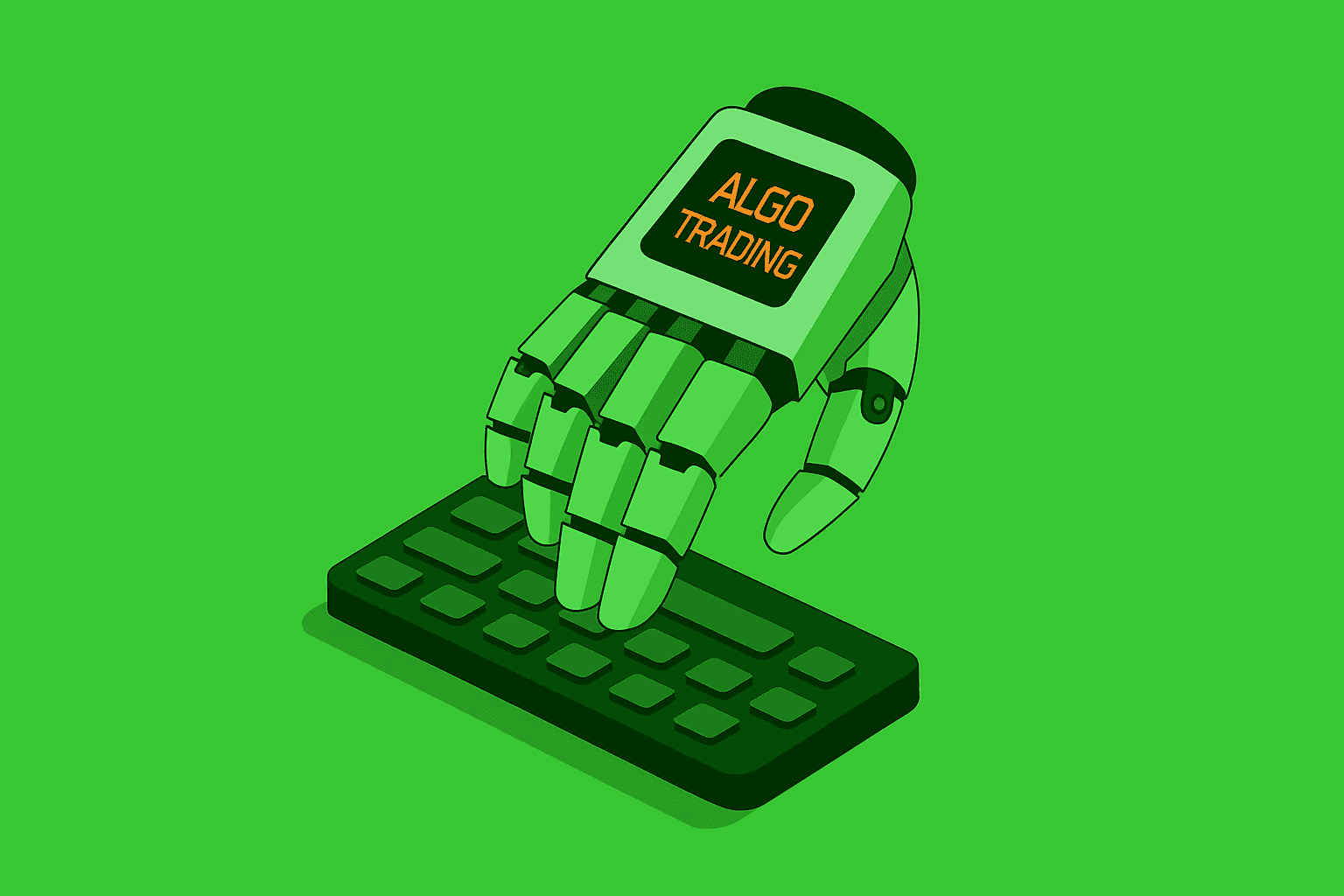
How is Algo Trading Beneficial for F&O Traders? Overview & FAQs
By
Arihant Team
Algo trading is changing how Futures and Options traders operate. By automating trades with speed and accuracy, it helps traders make smarter, emotion-free decisions and stay ahead in fast-moving markets.
In This Article
- Introduction
- What is algo trading and how does it work?
- How does algo trading help in managing emotions and biases?
- How does algo trading help in risk management?
- Is algo trading cost-effective for retail F&O traders?
- What’s the future of algo trading in India’s F&O market?
- Final thoughts
Introduction
If you are a futures and options (F&O) trader, you already know how fast things move in the market. A small delay can turn a winning trade into a loss. That’s where algo trading steps in, making your trades faster, more accurate, and more consistent.
Let’s understand how algo trading can give F&O traders a big edge in today’s competitive markets.
What is algo trading and how does it work?
Algo trading, short for algorithmic trading, uses computer programs to execute trades automatically based on predefined conditions.
Think of it as setting rules like, “Buy Nifty Futures when RSI drops below 30 and sell when it crosses 70.” Once programmed, the algo executes trades instantly when these conditions are met, without any emotional interference or manual effort.
These algorithms can monitor multiple stocks, indices, or option strikes at once — something that’s nearly impossible for human traders to do manually.
Why is algo trading becoming popular among F&O traders?
In the F&O segment, speed, precision, and timing matter more than anything else. Algo trading helps traders eliminate human delays and capitalize on short-term opportunities.
With exchanges like NSE and BSE now supporting API-based trading, even retail traders can access algo trading through platforms like ArihantPlus.
In short, algo trading isn’t just for institutions anymore; it’s becoming the go-to tool for smart retail traders too.
How does algo trading help in managing emotions and biases?
One of the biggest challenges in trading is emotional decision-making. Fear, greed, and panic often lead to poor entries and exits.
With algo trading, all trading decisions are rule-based. Once you set up your strategy, the algorithm follows it strictly, without fear or excitement.
No more second-guessing when to book a profit or worrying when markets fall suddenly. The system executes your trades exactly as planned with precision, helping you stick to your trading discipline.
Can algo trading improve execution speed in options trading?
Yes, in options trading, price changes happen in milliseconds, and by the time you click “buy” or “sell,” the price might already have moved.
Algo trading ensures trades are executed instantly as soon as your conditions are met — much faster than humanly possible. For example, if you’ve set an algo that says — buy Bank Nifty 46000CE when premium drops below ₹150 and sell at ₹200, it will happen within seconds no lag, no manual delay.
This speed advantage helps you catch opportunities and exit before market reversals.
How does algo trading help in risk management?
Smart F&O traders know that managing risk is more important than chasing profits. Algo trading can automate your stop-loss, trailing stop-loss, and profit booking rules precisely.
You can even design your strategy to adjust positions dynamically. For example, if Nifty futures goes up 1%, and you have taken a trade in Nifty, the algo can automatically shift your stop-loss higher to lock in profits.
This level of precision reduces risk and protects your capital from large drawdowns.
Can algo trading backtest strategies before live trading?
Yes, algo strategies can be back tested before making them live and that’s actually the ideal way to trade through algos. Before risking real money, you should backtest your algo trading strategies on historical data. This helps you understand how your strategy would have been performed in past market conditions and evaluate its performance, effectiveness, and risks.
You’ll get data like win rate, maximum drawdown, average profit per trade, etc. Once confident, you can move from paper trading to live trading.
This systematic approach gives algo F&O traders an analytical edge over gut-feeling-based manual traders.
Does algo trading help in diversifying across multiple strategies?
Manual trading limits you to one or two trades at a time. But with algo trading, you can run multiple strategies simultaneously across different stocks, indices, or option strikes.
For example, you can trade on:
- A breakout strategy on Nifty Futures
- A mean-reversion strategy on Bank Nifty Options
- A hedging strategy using Put-Call ratios
all at the same time with algo trading. Running diversified algos helps spread risk and generate consistent returns, even if one strategy underperforms.
Is algo trading cost-effective for retail F&O traders?
Yes, it’s surprisingly affordable now.
Most brokers offer subscription-based algo trading platforms with ready-to-use strategies. You don’t need to be a coder or data scientist to use them.
You can start small, automate your trades, and scale as you grow comfortable.
Also, algos save costs by minimizing slippages (the difference between expected and actual execution price), which can significantly improve your overall profitability.
Can algo trading be used for hedging in F&O?
Definitely, yes. Professional traders often use algos to create delta-neutral or market-neutral hedging strategies. For instance, if you have a large, long position in Nifty Futures, your algo can automatically buy protective puts when volatility spikes or adjust hedge ratios as per market movement.
Such automated risk control helps protect profits and reduces exposure during high-volatility events.
Are there any SEBI rules on algo trading?
Yes. SEBI has introduced strict guidelines (effective August 2025) for safer retail participation in algo trading.
Each algo must have:
- Exchange approval and unique ID tagging
- Broker responsibility for monitoring performance
- Empanelment of algo providers
- Safety controls like kill switch mechanisms
This framework ensures transparent, secure, and regulated algo trading for all participants.
What’s the future of algo trading in India’s F&O market?
The future looks bright. With AI and machine learning integration, algos are becoming smarter and adaptive. They can learn from market data, optimize strategies, and even predict volatility shifts.
As technology becomes more accessible, more retail F&O traders are expected to shift towards automation for better precision, consistency, and returns.
In the next few years, algo trading might become as common as online trading itself — with every serious F&O trader using at least one automated strategy.
Final thoughts
Algo trading is transforming F&O trading by combining technology, data, and discipline for faster and smarter execution. It removes emotional bias, improves risk management, and ensures consistency even in volatile markets. With SEBI’s new framework and easy retail access, algo trading is becoming essential for traders seeking precision, efficiency, and better returns — truly the future of F&O trading.
Related Topics




